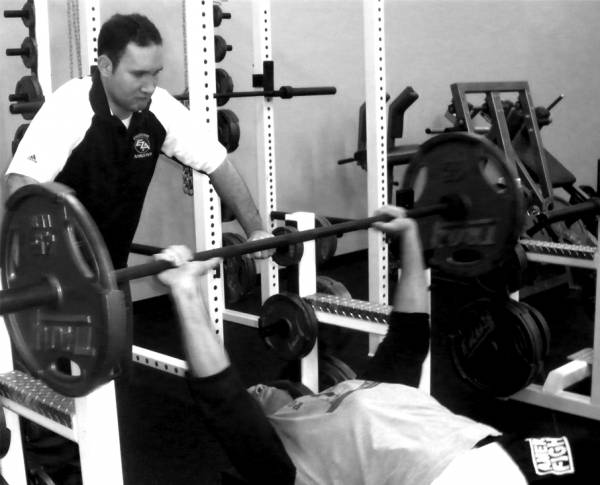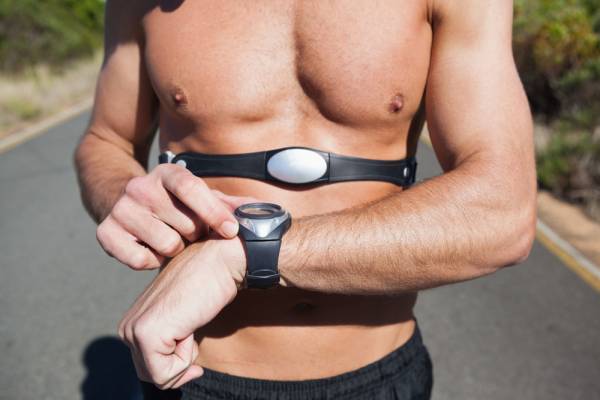Watch My Video: Optimizing Your Energy Systems Training
Despite the vast complexity of the human body and the diversity of specific training goals, whether or not people achieve them is simple. In fact, when it comes to improving your conditioning, there are only two main criteria that will ultimately determine whether or not you reach that goal – your training program and how you manage that program.
Watch My Video: Optimizing Your Energy Systems Training
Despite the vast complexity of the human body and the diversity of specific training goals, whether or not people achieve them is simple. In fact, when it comes to improving your conditioning, there are only two main criteria that will ultimately determine whether or not you reach that goal – your training program and how you manage that program.
The Value of a Good Training Program
The first one is the most obvious and it’s your training program itself. All training programs are certainly not created equal and the quality, appropriateness, and effectiveness of your overall training program will go a long way toward determining the results of your hard work.
RELATED: 7 Markers of a Solid Strength Program
A good program begins with an evaluation of some sort that’s designed to better understand your specific needs, and a good program is built on solid training principles. The most important thing to keep in mind is that a program should address your weaknesses while reinforcing your strengths.
“All training programs are certainly not created equal and the quality, appropriateness, and effectiveness of your overall training program will go a long way toward determining the results of your hard work.”
Aside from the program itself, the second factor that will determine whether or not you reach your goals is how well you’re able to manage the program. Unfortunately, despite its importance, this is an area overlooked more than any other when it comes to fitness, performance, and even health.
Over this two-part article series, I’ll give you an overview of two simple and yet incredibly powerful tools that you can use to effectively manage your training program and get one step closer to reaching your goals. In this first article, we’ll look at heart rate monitoring.
Tool #1: Heart Rate Monitoring
Just as it’s vital to keep track of how much weight you’re lifting when the goal is to improve strength and power, monitoring heart rates during training is an essential piece of any good conditioning program.
LEARN MORE: Heart Rate Monitoring: An Effective Test for Overtraining
When used properly, a heart rate monitor gives you invaluable feedback that can help guide your training and let you know if you’re making consistent progress toward your goals. There are three simple ways to incorporate heart rate monitoring into your training program.

1. Find Your Maximum Heart Rate
With any conditioning program, heart rates are the best way to gauge intensity. Without one, you’re simply left guessing. A heart rate that’s 60% of your maximum might not feel hugely different than one that’s 70%, for example. But over time, that 10% difference can have a huge impact on your results.
To get started using a heart rate monitor, there are two numbers that are the most important to know. The first is your maximum heart rate. Despite what’s printed on various pieces of cardio equipment, the old formula of 220 – age is not particularly accurate at all.
“A heart rate that’s 60% of your maximum might not feel hugely different than one that’s 70% … But over time, that 10% difference can have a huge impact on your results.”
To find your true maximum heart rate, there is only one way to do it and that’s to push yourself to your limits. When you do, you’ll inevitably get to a place where, despite your best efforts, your heart rate doesn’t increase. This is the number you should use as your max heart rate.
2. Know Your Anaerobic Threshold
Next, you’ll need to know your anaerobic threshold, the range above which your body must produce higher and higher amounts of the total energy necessary through anaerobic pathways.
LEARN MORE: Anaerobic Capacity Essential for High-Level Boxers
The best way to determine your threshold is through specific testing at a lab, but if that’s not an option, a less accurate but still valuable option is to perform twelve to fifteen minutes of exercise at the highest pace possible without slowing down and take your average heart rate during the exercise. You can then consider your anaerobic threshold range to be +/- 5 beats of that average heart rate.
“[I]f you can run 8mph at a heart rate in the 150s at the start and six weeks later you’re able to run 10mph at the same heart rates, it’s a clear indication that your conditioning is improving.”
Together, your maximum heart rate and your anaerobic threshold range can help determine precisely how hard you should be working during your training, and over time, these will allow you to gauge progress as well. If your program is having the desired effect, you should see your speeds/work increasing for a given heart rate. In other words, if you can run 8mph at a heart rate in the 150s at the start and six weeks later you’re able to run 10mph at the same heart rates, it’s a clear indication that your conditioning is improving.

3. Track Your Training Load
Training load is a measure of the overall volume/intensity of your training session. This is hugely important to know because it allows you to make changes up or down as necessary in order to get the best results.
RELATED: Using Intensity to Increase Strength, Power, and Endurance
Using a heart rate monitor, it’s easy to get an accurate gauge of training load by looking at three specific numbers:
You’ll want to keep track of your total workout time and average heart rate. Obviously, working out longer and at a higher average heart equates to a higher training load. Just about any modern heart rate monitor will track and display these two numbers for any workout that you do.
You’ll want to keep track of total time spent at heart rates above 90% of your maximum. These heart rates represent the highest intensities, and thus they place the greatest loads on your body and are important to track. Again, it’s clear that a training session where you spend three minutes of time above 90% of your maximum heart rate represents a higher training load than one where you only spend one minute in this zone.
Most good heart rate monitors allow you to program specific zones so all you need to do is make one of the zones 90-100% of your maximum heart rate and set it to track time spent in this zone.
“[Training load] is hugely important to know because it allows you to make changes up or down as necessary in order to get the best results.”
Summary
Improving your conditioning is always hard work, but using a simple heart rate monitor can help you get the job done faster and more efficiently.
- Determine your true maximum heart rate
- Measure or estimate anaerobic threshold range
- Use heart rates based on those two numbers to select the right training intensities
- Track your progress by comparing speed/power output to heart rate
- Gauge overall training load by keeping track of total workout time, average heart rate, and time spent above 90% of your max
Though just about any good heart rate monitor will do all this and more, I personally prefer Polar monitors for their overall quality and durability. The Polar RS300 is one I often recommend as it has all the features necessary for effective heart rate monitoring along with a high-quality and comfortable chest transmitter belt. If you’d rather use your mobile phone than a watch, consider the use of the Polar Beat app along with a Bluetooth compatible transmitter instead.

Coming up in part two How to Manage Your Conditioning Program, Part 2, I’ll share with you how to combine cutting-edge heart rate variability technology with your heart rate monitor to get even better results.






